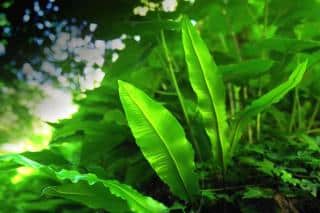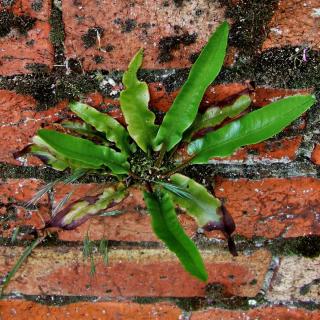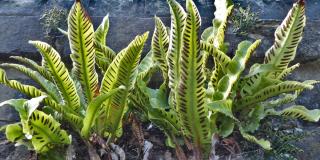

Hart’s tongue fern is a wonderful, refreshing fern to grow in both house and garden.
Hart’s tongue fern facts
Name – Asplenium scolopendrium
Formerly – Phyllitis scolopendrium
Family – Polypodiaceae
Type – fern, perennial, indoor plant
Height – 16 to 20 inches (40 to 50 cm)
Exposure – part sun, shade
Soil: ordinary – Foliage: evergreen – Flowering: none
It loves shade, and will excel in decorating those hard-to-grow dark spots of the garden.
All year round for plants in containers, as long as it is neither freezing nor too hot.

It sometimes appears on its own in unexpected places.
It won’t need much soil, and is a great addition to a flowered stone wall.
To grow this fern in a pot, indoors, you’ll simply need to make sure it gets enough water.
However, at the same time, the soil must drain extremely well. A great option is to grow it as a hanging fern and to dunk it in water twice a week, then letting it drip dry.
They don’t need any pruning. Eliminate dead leaves after they’ve withered away, once they’re dry.

Just keep coming back at it for a few more times, removing any growth and coaxing a bit more roots out. Eventually the fern’s root ball will deplete its nutrient reserves and will die off.
This small fern execrates full sun and will always prefer shaded, often more damp areas.
Its growth is relatively slow, and it won’t grow any taller than 20 inches (50 cm). Ideal for an indoor wall garden! As an indoor plant, water it regularly to ensure the soil doesn’t dry off.

To reproduce, hart’s tongue produces spores that are lined up on the underside of leaves. These lines look like small millipedes or centipedes: this is where the botanical name “scolopendrium” comes from. Indeed, it’s the old latin word for those two insects!
Indoors, if the leaves turn black, it’s usually because the air is too dry.
Dip the pot in a pail of water and place the plant in a cooler spot, away from heat sources.